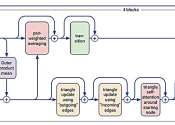Transforming common soft magnets into next-generation thermoelectric conversion materials with 3-minute heat treatment
A research team from NIMS and Nagoya University has demonstrated that an iron-based amorphous alloy, widely used as a soft magnetic material in transformers and motors, can be transformed into a "transverse" thermoelectric ...









